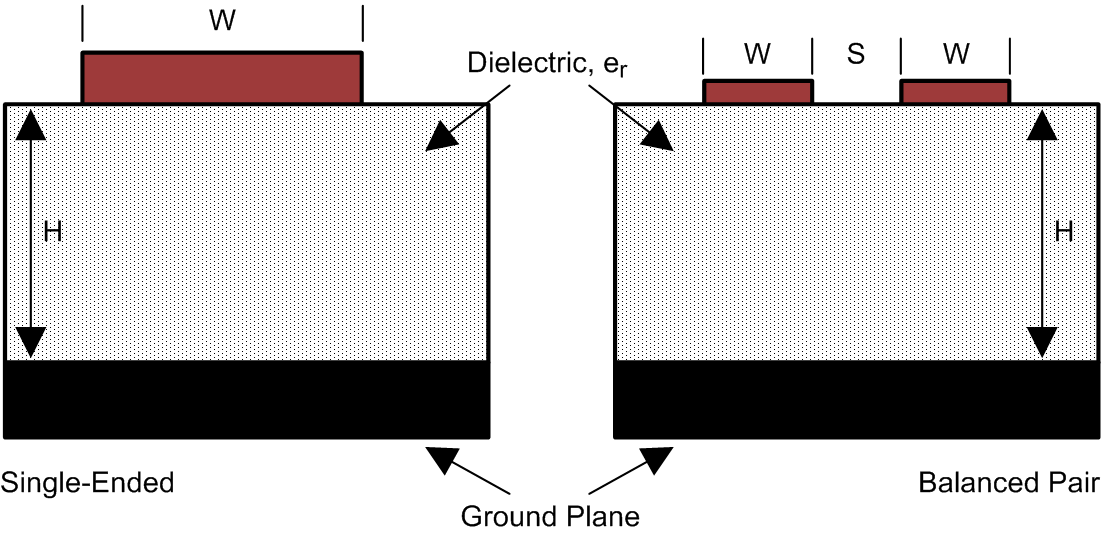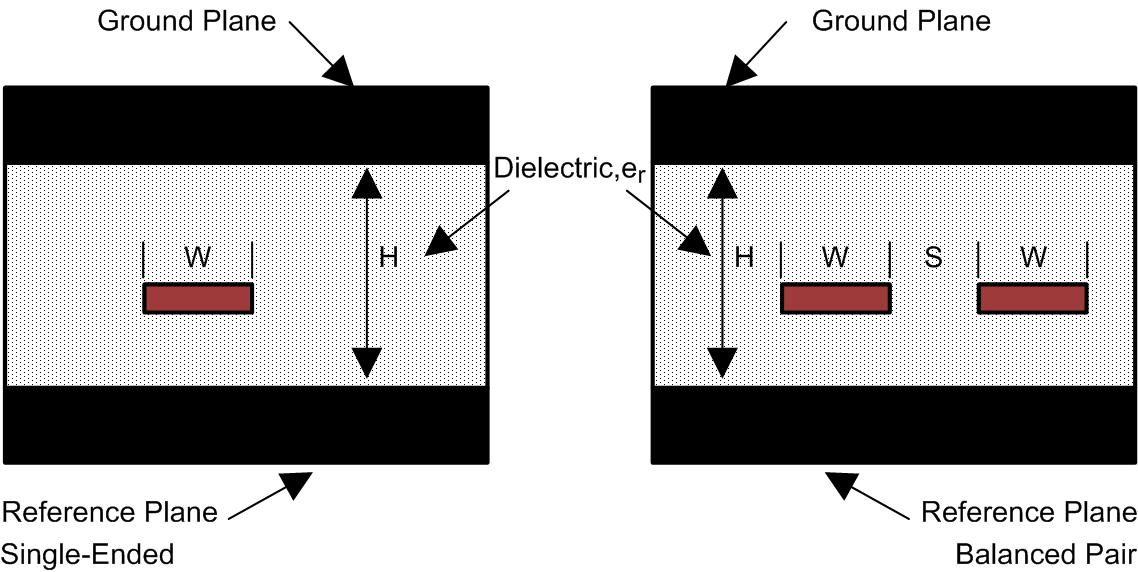JAJSGS7C September 2005 – July 2021 DS90LV011AH
PRODUCTION DATA
- 1 特長
- 2 アプリケーション
- 3 概要
- 4 Revision History
- 5 Pin Configuration and Functions
- 6 Specifications
- 7 Parameter Measurement Information
- 8 Detailed Description
- 9 Application and Implementation
- 10Power Supply Recommendations
- 11Layout
- 12Device and Documentation Support
- 13Mechanical, Packaging, and Orderable Information
11.1.1 Microstrip vs. Stripline Topologies
As per the LVDS Application and Data Handbook, printed-circuit boards usually offer designers two transmission line options: Microstrip and stripline. Microstrips are traces on the outer layer of a PCB, as shown in Figure 11-1.
 Figure 11-1 Microstrip Topology
Figure 11-1 Microstrip TopologyOn the other hand, striplines are traces between two ground planes. Striplines are less prone to emissions and susceptibility problems because the reference planes effectively shield the embedded traces. However, from the standpoint of high-speed transmission, juxtaposing two planes creates additional capacitance. TI recommends routing LVDS signals on microstrip transmission lines when possible. The PCB traces allow designers to specify the necessary tolerances for ZO based on the overall noise budget and reflection allowances. Footnotes 11, 22, and 33 provide formulas for ZO and tPD for differential and single-ended traces. (2)(3)(4)
 Figure 11-2 Stripline Topology
Figure 11-2 Stripline Topology